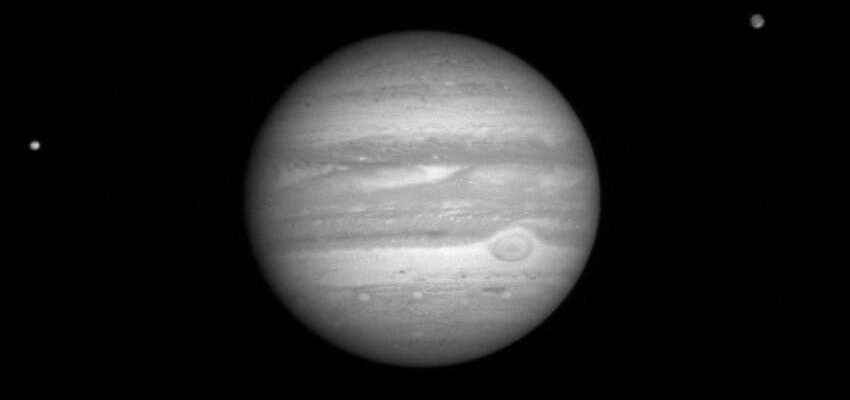Jupiter stands in opposition in the constellation Pisces on September 26 – and with an apparent magnitude of -2.9 mag is undoubtedly the highlight of the planetary sky. At opposition, the planet and the sun are exactly opposite each other in the earth’s sky. When the sun goes down, the planet rises and vice versa. So Jupiter can be seen all night, and at 591.3 million kilometers is closer than it is at any other time in the whole year. This can be seen in the telescope on the currently particularly large Jupiter disk: it measures almost 50 arc seconds at the planet’s equator and slightly less at the pole. The giant planet will also culminate in decent heights again this year with 40 degrees. Best prospects for seeing cloud bands, cloud swirls and of course the famous Great Red Spot – which changes size and color slightly every year. What does the stain look like this fall? Find out! Also of interest are the four bright moons Io, Europa, Ganymede and Callisto, whose passages, shadows, occultations and eclipses can also be seen with small telescopes (see table “Apparitions of the Galilean moons of Jupiter”). One can observe that when a moon passes in front of the disk of Jupiter, the distance to its own shadow is the smaller, the closer the opposition date approaches – then the sun, earth and Jupiter are (almost) exactly in a line. This is especially true for the inner moon Io: on the evening of the 25th of the month it even covers part of its own shadow during one transit. This is possible because the last equinox on Jupiter was only a year and a half ago. The moon pays its monthly visit to Jupiter on September 11th.
© SuW graphic (detail)
Jupiter in opposition | The largest planet in the solar system is in peak form and can be seen in the south-east in the evening at around -3 mag all night. On September 11th he meets the Earthmoon in the sky.
Saturn was in opposition in mid-August. It moves retrograde in September, i.e. westwards through the constellation Capricorn. It is increasingly best seen before midnight: on September 1 it culminates at 00:09 at 24 degrees altitude; on the last day of the month it reaches its highest level two hours earlier, around 10:10 p.m.. In the telescope, the -0.5 mag bright planet appears 18 arc seconds, with its rings almost 43 arc seconds in size. With a small telescope one can see at least four moons surrounding the rings, of which Titan is the brightest and simplest at 8.5 mag. This moon will pass south of Saturn September 7-8.
